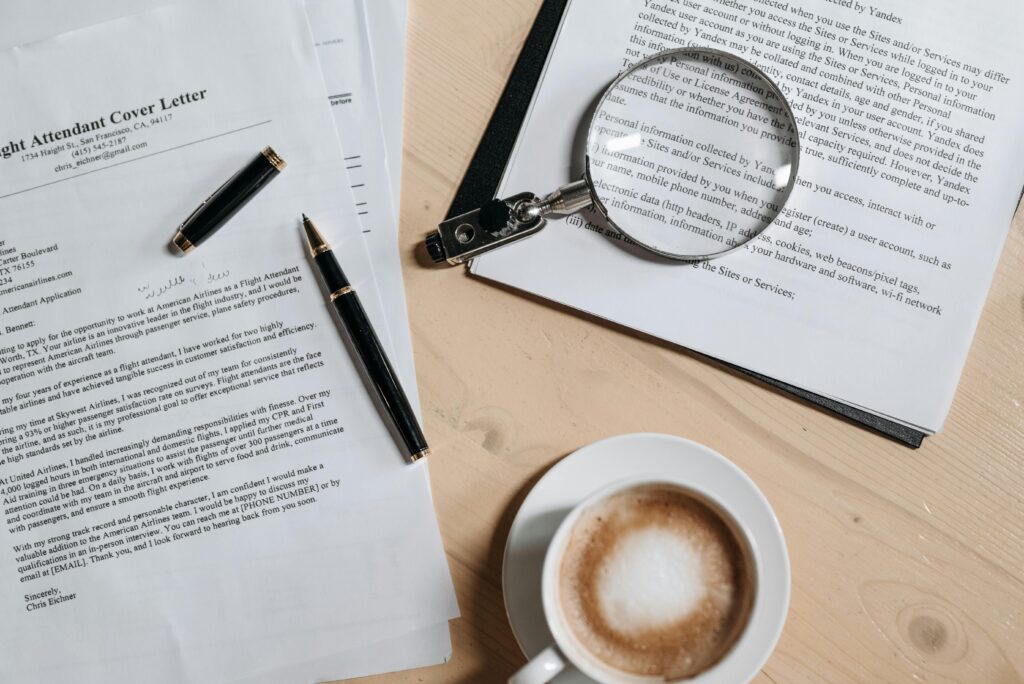Cover Letters Explained – What They Are and Why You Need One

Table of Contents
In today’s competitive job market, a cover letter serves as a critical tool that can significantly sway hiring decisions in your favor. You might wonder, what exactly is a cover letter, and why is it so essential in your job application process? A cover letter is a personalized document that you submit alongside your resume when applying for a job. It provides an opportunity to highlight your skills, experiences, and motivations in a way that your resume alone may not convey.
This article will delve into the nuances of a cover letter, offering you practical guidance on crafting an effective one that resonates with prospective employers. We’ll explore the structure, key elements, and best practices, ensuring that your cover letter enhances your job application and stands out.
Understanding the Role of a Cover Letter
The Purpose of a Cover Letter
A cover letter is your first chance to make a specific impression on a hiring manager. It serves several purposes:
- Personalization: Unlike a resume, which may appear as a standardized document, a cover letter allows you to address the hiring manager directly, demonstrating your interest in the specific position and company.
- Showcasing Personality: Your cover letter gives insight into your personality, communication style, and motivation for applying for the job.
- Explaining Fit: It lets you connect the dots between your skills, experience, and the job requirements. You can explain why you are the ideal candidate for the role.
The Importance of a Cover Letter
Research shows that including a cover letter can significantly increase your chances of landing an interview. According to a 2022 survey by the CareerBuilder, 45% of recruiters stated that they wouldn’t consider applicants who skipped sending a cover letter. A well-crafted cover letter can demonstrate your professionalism, attention to detail, and genuine interest—which are key traits many employers look for.
Components of an Effective Cover Letter

Crafting a cover letter involves a strategic approach to ensure that each section serves its purpose. Here are the essential components to include:
1. Contact Information and Salutation
Your cover letter should begin with your contact information, followed by the date and the company’s contact information. Use a formal salutation to begin your letter, such as “Dear [Hiring Manager’s Name].” If you don’t know the person’s name, “Dear Hiring Manager” is a suitable alternative.
2. Introduction
In the opening paragraph, briefly introduce yourself and express your enthusiasm for the position. Include how you found out about the job—whether it was through a job board, a referral, or your network. A compelling introduction sets the tone for the rest of your cover letter.
3. Body of the Cover Letter
This section is the heart of your cover letter, typically consisting of two to three paragraphs where you elaborate on your qualifications and experiences:
Highlight Relevant Skills and Achievements: Focus on achievements and skills directly related to the job. Use specific examples to illustrate how your past experiences make you a good fit.
Align with Company Goals: Demonstrate understanding of the company’s mission and values, and explain how you can contribute to their objectives. This shows that you have done your homework and are genuinely interested.
4. Closing Paragraph
Conclude your cover letter by reiterating your interest in the role. Include a call to action, such as expressing your eagerness for an interview or suggesting that you will follow up. Thank the employer for considering your application.
5. Signature
End with a polite closing: “Sincerely” or “Best regards,” followed by your name. If you’re submitting a hard copy, a handwritten signature adds a personal touch.
Tips for Writing a Strong Cover Letter

As you proceed with crafting your cover letter, consider the following tips:
Tailor Each Cover Letter
Customization is key. Avoid using a one-size-fits-all approach. Tailor your cover letter for each job application to reflect the specific requirements and culture of the organization.
Use Clear and Concise Language
Keep your cover letter to one page, typically around 250–300 words. Use direct language, and be mindful of grammar and spelling. A clear, concise message will engage the reader without overwhelming them.
Show Enthusiasm
Let your passion for the position and the field shine through. Employers appreciate candidates who are genuinely excited about the opportunity to contribute to their organization.
Avoid Negative Language
Focus on what you bring to the table rather than what you lack. Present accomplishments positively, and refrain from criticizing a former employer or other opportunities.
Include Keywords
Incorporate keywords from the job listing to ensure relevance. Many employers use Applicant Tracking Systems (ATS) that scan for specific terms. Including these terms can help your cover letter pass the initial screening.
Common Mistakes to Avoid

Overly Formal Language
While professionalism is key, overly formal language may alienate the reader. Aim for a conversational but respectful tone.
Repeating Your Resume
Your cover letter should complement your resume, not repeat it. Focus instead on weaving a narrative that connects your experiences and aspirations.
Focusing Too Much on Yourself
While you want to convey your qualifications, it’s equally important to connect your skills to the employer’s needs. Show how you will add value rather than simply listing your achievements.
Ignoring the Format
Proper format makes your cover letter easy to read. Use standard font styles (like Arial or Times New Roman), keep the font size between 10-12pt, and utilize clear paragraphs with sufficient spacing.
Final Thoughts
A well-crafted cover letter can set you apart in a crowded job market. It’s an opportunity to express your passion and articulate how your skills align with the job and the organization’s needs. As you embark on your job search, remember that your cover letter is not just a formality; it’s a vital component of your application that can pique interest and lead to a successful interview.
Call to Action
Are you ready to craft your own compelling cover letter? Start by outlining your relevant experiences, tailoring it to the job description, and following the tips discussed in this article. If you have questions or need assistance, feel free to leave a comment below, and let’s create a winning cover letter together!


